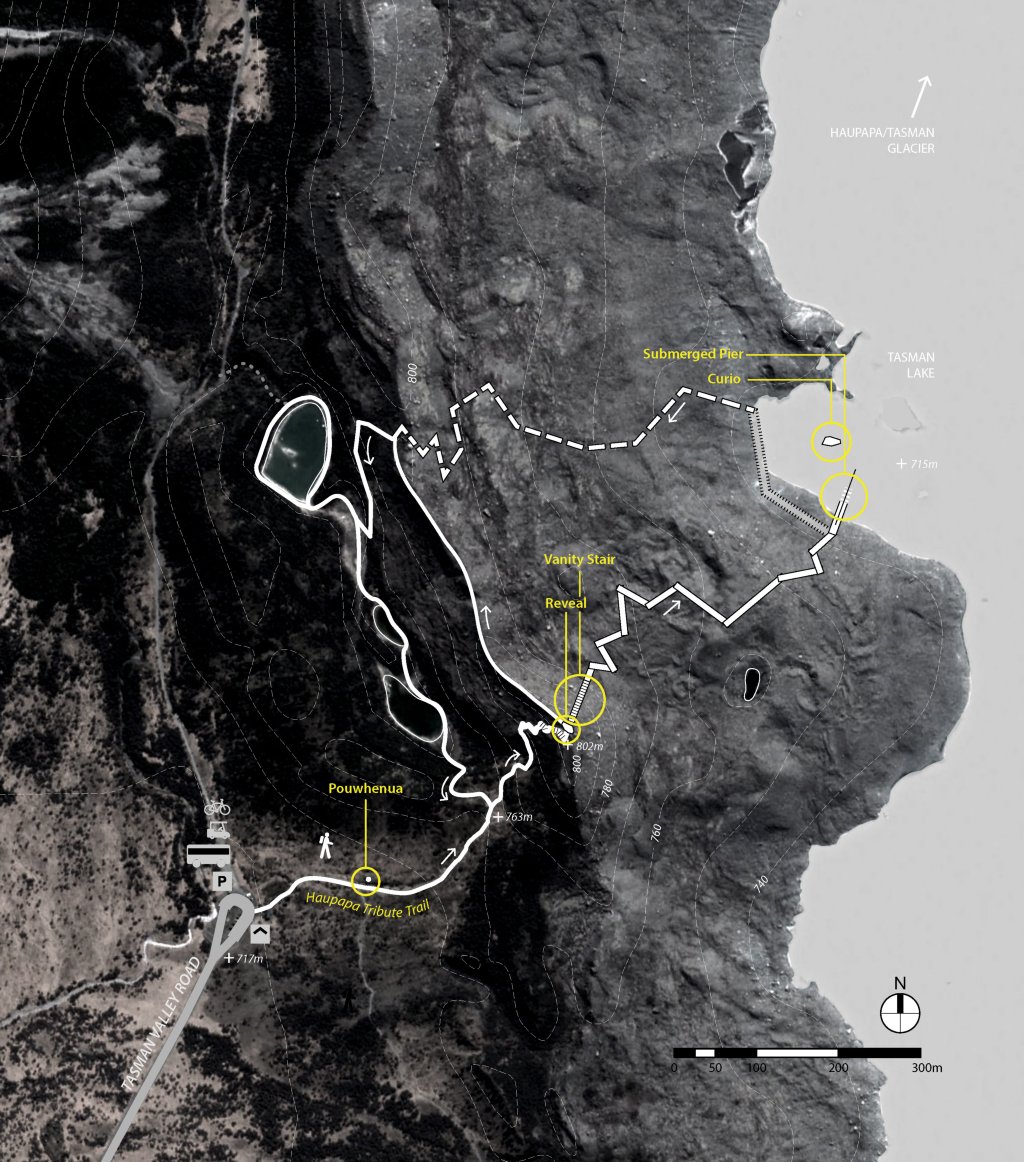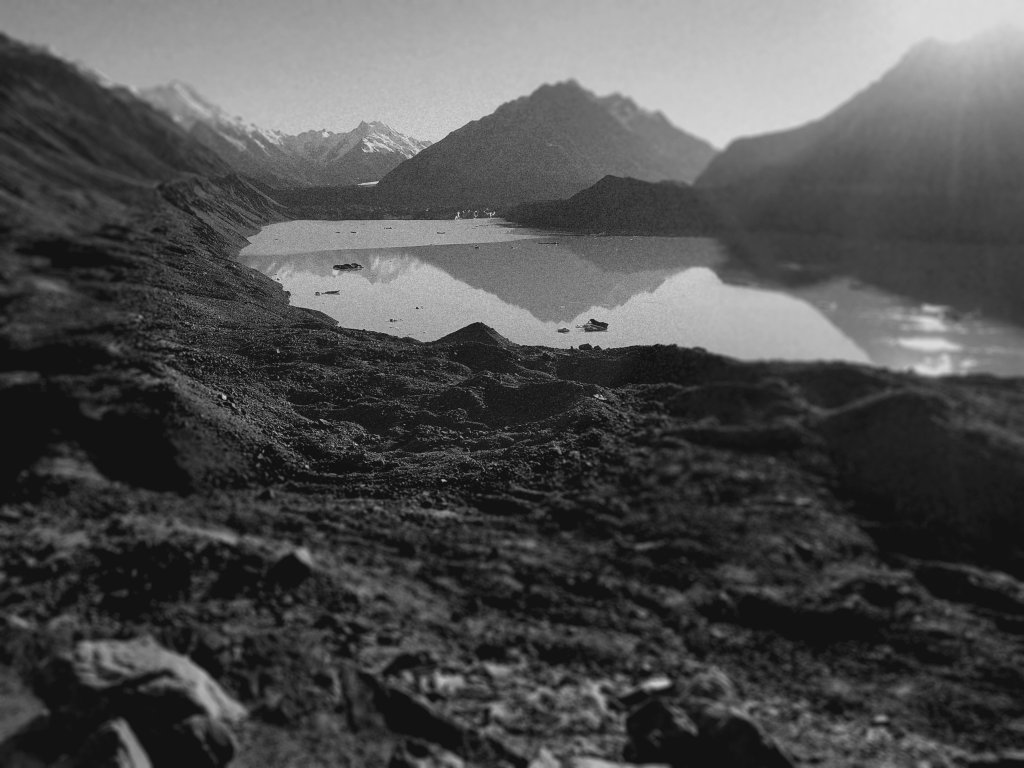Although glacier retreat is a well-recognized consequence of climate change, with the exception of a plaque in Iceland and blankets in Switzerland, little is being done about it. As landscape designers, how can we help? Tribute to a Glacier explores how aesthetics in landscape design can be used to address the psychological experience of glacier retreat. It uses the highly touristic and retreating Haupapa/Tasman Glacier in Aoraki/Mt Cook National Park in New Zealand as a case study. It presents the potential of this relationship as an important first step towards fostering environmental stewardship.
The authors visited the National Park and interviewed rangers, guides, workers, and visitors. All had experienced some kind of grief and/or conflicting emotions towards the loss of this iconic glacier. These feelings become what psychologist Renee Lertzman calls, Environmental Melancholia. The authors presented five landscape design alternatives that engaged with the glacier in various ways. These findings were combined with a literature review of melancholia and contemplation in the landscape. Together, they informed an aesthetic framework for a landscape design to address this melancholia.
The proposed design is a journey through the glacial landscape that uses a series of ‘design devices’ in sequence based on aesthetic and non-aesthetic properties. Key moments, such as the ‘Reveal’, Vanity Stair’, and ‘Curio’ invite, but do not force, focus, concentration, and lastly, contemplation, for the participant.
The project suggests that pragmatic and technocratic solutions are insufficient to address current environmental degradation. Solving inward and external problem requires a different approach. The ‘Glacier’ presents what a landscape architect would do with such a task - the landscape becomes an aesthetically driven portal into a potential psychological transition. In a quiet and contemplative way, this proposition is the antithesis of our productive, efficient, and digitally connected lives. It suggests that leaning into the void, embracing solitude and slowness and reflecting on our place within the larger whole might foster environmental stewardship.





